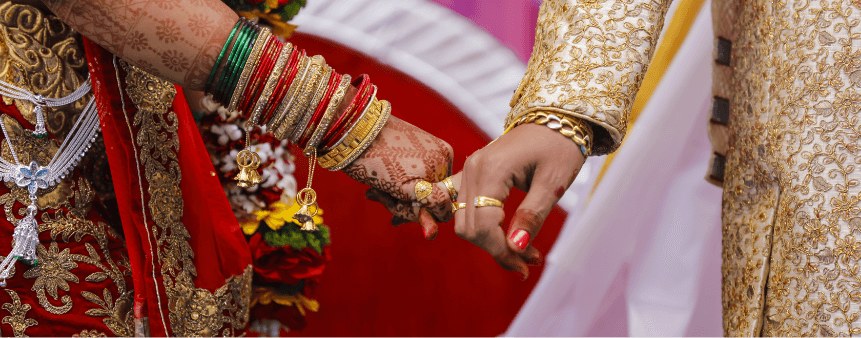Talk to India's best Astrologers
First Consultation at ₹1 only
Login
Enter your mobile number
Ganesha Chaturthi, also known as Vinayaka Chaturthi, is a Hindu festival that celebrates the birth of Lord Ganesha, the elephant-headed lord. The festival lasts ten days and is observed with great warmth and devotion. During Ganapathi Pooja, devotees seek blessings from Lord Ganesha and ask for prosperity, knowledge, and success. Scroll down for detailed information about the history, meaning, significance, and more of Ganesh Chaturthi 2024.
Below is the complete list of Ganesh Chaturthi Puja Time, along with the Ganesh Chaturthi 2024 date in India calendar:
| Ganesh Chaturthi Celebration | Ganesh Chaturthi 2024 Date | Muhurat/ Pooja Tithi Begins | Muhurat/ Pooja Tithi Ends | Duration |
|---|---|---|---|---|
| Madhyahna Ganapathi Pooja | September 7, 2024 | 11:07 AM | 01:33 PM | 02 Hours 27 Mins |
| Ganpathi Visarjan | September 17, 2024 | 09:48 AM | 01:48 PM | 03 Hours 00 Mins |
| Time to avoid Moon Sighting | September 6, 2024 | 03:01 PM | 08:34 PM | 05 Hours 33 Mins |
| Vinayaka Chavithi Timings | September 6-7 2024 | 03:01 PM | 05:37 PM | 02 Hours 36 Mins |
Ganesh Chaturthi is a significant Hindu festival. It has a strong cultural and social significance, bringing people together in the spirit of celebration. The festival is seen as an opportunity for devotees to seek the blessings of Lord Ganesha and seek his help in overcoming obstacles in their lives.
During the Ganesh Chaturthi celebration, the devotees bring the idol of Lord Ganesha and install it in their homes or pandaals. The festival usually falls on the fourth day of the Hindu month of Bhadrapada (August-September). For the ten days, devotees perform various rituals and offer prayers, seeking the deity's guidance and protection.
The festival of Vinayaka Chavithi 2024 serves as a reminder of the power of faith and devotion. Devotees believe that by seeking the blessings of Lord Ganesha, they can overcome any obstacle that may come their way. Along with overcoming obstacles, devotees see the Ganesh Chaturthi celebration as a way of achieving success and prosperity in their lives.
In Hindu mythology, Lord Ganesha is seen as the god of new beginnings. This is why devotees seek blessings from Lord Ganesha before performing any auspicious ritual. So, the festival of Ganesh Chaturthi is associated with beginning new ventures.
They offer prayers to Lord Ganesha and ask him to smoothen the future of a new venture they are about to start. All in all, the significance of Ganesh Chaturthi revolves around a time for new beginnings and seeking the deity’s blessings and guidance.
The mythological aspect of Ganesh Chaturthi is an integral part of the festival. Why? Well, it provides a rich cultural and religious background that is steeped in tradition. Below are the different versions of Ganesh Chaturthi story in english that will help you understand the Ganesh Chaturthi history and the significance of this 10-day festival.
According to Hindu mythology, Lord Ganesha was born to Lord Shiva and Goddess Parvati. Several legends believe that one day, while Goddess Parvati was taking a bath, she created a statue of Lord Ganesha from the ubtan (turmeric paste to clean the body). After shaping the whole statue, she breathed life into the statue. This is how the god of new beginnings and the remover of the obstacles, Lord Ganesha, came to life as her son.
Another version of the Ganesh Chaturthi story in English includes the rage of Lord Shiva. What happened was Goddess Parvati asked Lord Ganesha to guard the door while she took a bath. While, little Ganesha was guarding the door, Lord Shiva came and tried to enter the door. Not knowing how Lord Shiva was, Lord Ganesha stopped him as per the instructions. This is what angered Lord Shiva, who removed Ganesha’s head from the body.
However, when he realised that Ganesha was Parvati’s son, he promised to bring him back to life by replacing his head. But there was a condition. The head would be of the first living creature he met. The creature turned out to be an elephant; hence, Ganesha became known as the elephant-headed deity.
The last mythological story related to Ganesh Chaturthi is the most interesting and revolves around Chandra Deva (Lord Moon) and Lord Ganesha. Known for his beauty, Chandra Deva used to take pride in his looks. Once, he tried to make fun of Lord Ganesha and passed comments on his appearance. This enraged Ganesha, and he cursed Chandra Deva and said that whoever looked at him would suffer from false allegations and rumours.
However, Chandra Deva soon realised his mistake and asked for forgiveness. Lord Ganesha took back the curse under one condition: People can look at the moon anytime, but not on Bhadrapada Chaturdashi. This is why looking at the Moon on Ganesha Chaturthi is not considered auspicious.
The celebrations of Ganesh Chaturthi or Vinayaka Chavithi 2024 begin with the installation of large, beautifully decorated clay statues of Lord Ganesha in homes, public pandals, and on the streets. The statues are usually installed on the day of the festival, which falls on the fourth day of the Hindu month of Bhadrapada (usually in August or September). Below are the different rituals that will be observed during Vinayaka Chavithi 2024 :
